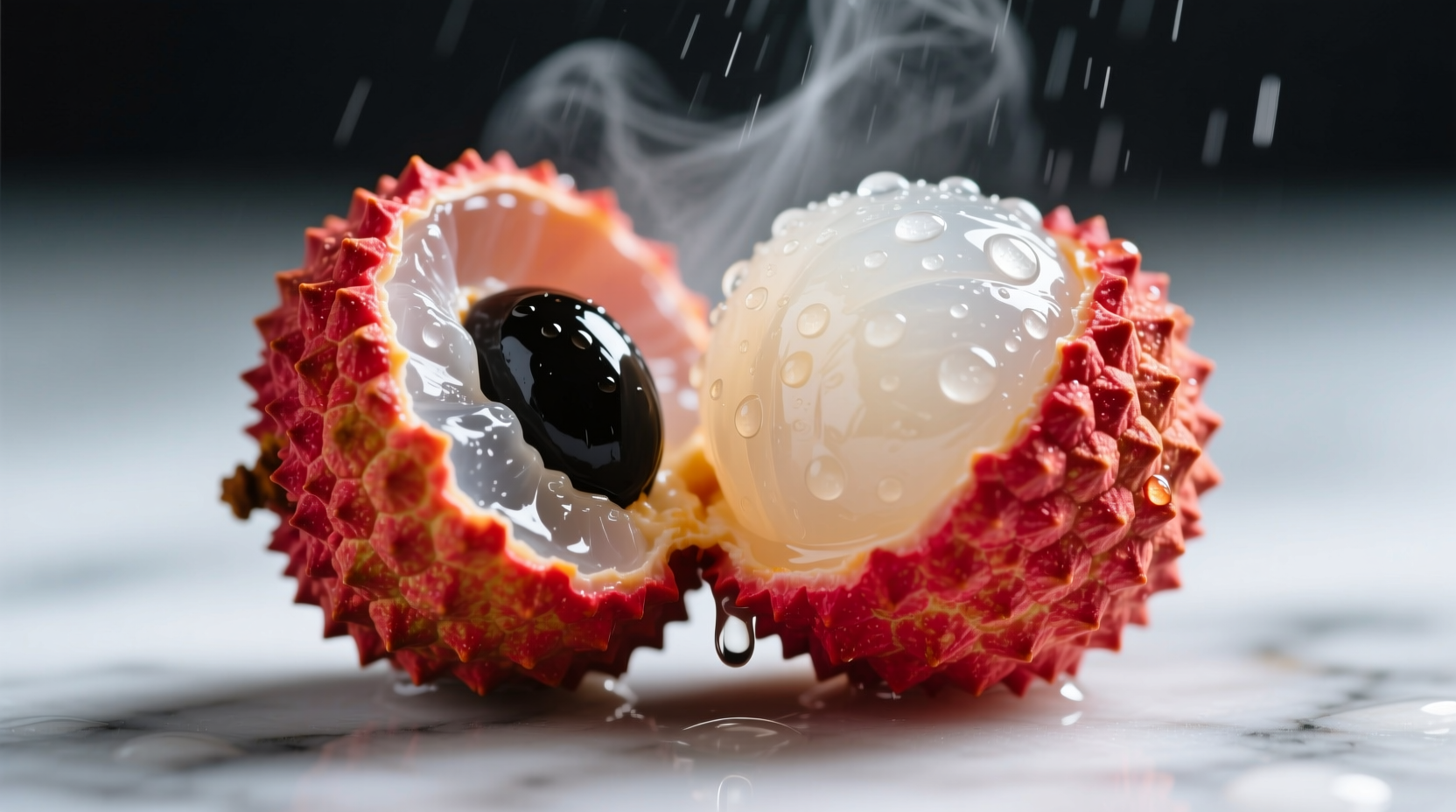Confusion about "lychee nuts" is common. Lychee (Litchi chinensis) is a fruit native to Southern China, and what people often mistake for a nut is actually its large, inedible seed. Understanding this distinction is crucial before exploring its distinctive taste.
Why the "Lychee Nut" Misconception Persists
Many search queries mistakenly refer to "lychee nuts" due to:
- Confusion with similarly named ingredients like litchi nuts (which don't exist)
- Misidentification of the fruit's prominent seed as a nut
- Translation errors from Asian languages where fruit/seed terminology differs
Decoding Lychee's Flavor Profile
When perfectly ripe, lychee delivers a complex sensory experience that's difficult to replicate. Here's what makes its taste unforgettable:
| Flavor Dimension | Description | Comparable Elements |
|---|---|---|
| Primary Sweetness | Intense but balanced sugar content (15-20° Brix) | Ripe grapes × honeydew melon |
| Acidity Level | Subtle tartness that prevents cloying sweetness | Citrus undertones without sharpness |
| Aromatic Notes | Floral complexity with tropical fruit accents | Rosewater × passion fruit × subtle musk |
| Texture Experience | Translucent, juicy flesh with slight resistance | Grapes × firm jelly |
According to the University of Florida's Tropical Research & Education Center, lychee's unique flavor chemistry comes from volatile compounds like ethyl butyrate and linalool that create its signature floral-fruity bouquet (trec.ifas.ufl.edu).
How Ripeness Transforms Lychee's Taste
Unlike most fruits, lychee doesn't continue ripening after harvest. Its flavor evolution happens in distinct stages:
- Underripe (pink-red skin): High acidity dominates with grassy notes—best avoided
- Optimally ripe (bright red, slightly bumpy): Perfect sugar-acid balance with floral notes fully developed
- Overripe (brown spots, soft): Fermented notes emerge as natural sugars break down
The USDA's Specialty Crops Research notes that lychees harvested at peak ripeness contain 30% more aromatic compounds than those picked early (usda.gov).
Regional Variations in Flavor Experience
Where lychees are grown significantly impacts their taste profile:
- Chinese varieties (Nvzhen, Feizici): Higher acidity with pronounced rose notes
- Thai cultivars: Sweeter profile with tropical fruit dominance
- Hawaiian-grown: Balanced sweetness with subtle wine-like complexity
This variation explains why travelers might report different taste experiences. The Journal of Food Science documents how soil composition in different regions affects the fruit's terpene content, directly influencing its aromatic profile.
Practical Taste Testing Guide
To fully appreciate lychee's flavor, follow these professional tasting steps:
- Selection: Choose fruits with intact, bright red shells that feel heavy for their size
- Preparation: Gently crack the shell without damaging the flesh inside
- First impression: Note the immediate floral aroma before tasting
- Taste sequence: Let the fruit sit on your tongue briefly before chewing to experience flavor evolution
- Aftertaste observation: Quality lychee leaves a clean, refreshing finish without bitterness
Culinary Applications That Showcase Lychee's Flavor
Understanding what does a lychee taste like helps in using it effectively:
- Raw consumption: Best enjoyed fresh to experience its delicate balance
- Desserts: Pairs beautifully with coconut, mango, and citrus without overpowering
- Cocktails: Muddled lychee creates complex base notes in spritzes and martinis
- Savory applications: Complements duck and pork dishes with its subtle sweetness
Chef Thomas Keller notes in The French Laundry Cookbook that lychee's "translucent flesh and floral notes make it the perfect bridge between fruit and perfume in modern plating."
Common Flavor Confusions to Avoid
Many mistake lychee for similar fruits. Here's how to distinguish them:
- Longan: Less floral, more musky with thicker skin
- Rambutan: Similar texture but more acidic with less floral complexity
- Dragon fruit: Mildly sweet with kiwi-like seeds, no floral notes
When properly identified, what does a lychee taste like becomes unmistakable—a flavor experience that's been celebrated in Chinese poetry for over 2,000 years.
Preserving Lychee's Delicate Flavor
To maintain the authentic taste experience:
- Consume within 24-48 hours of purchase for peak flavor
- Store unpeeled fruits in a paper bag in the refrigerator
- Avoid freezing whole fruits (causes texture degradation)
- For preserved flavor, use in light syrups rather than heavy sugar solutions
Understanding what does a lychee taste like isn't just about flavor notes—it's about appreciating how its delicate balance can transform dishes when used thoughtfully.











 浙公网安备
33010002000092号
浙公网安备
33010002000092号 浙B2-20120091-4
浙B2-20120091-4